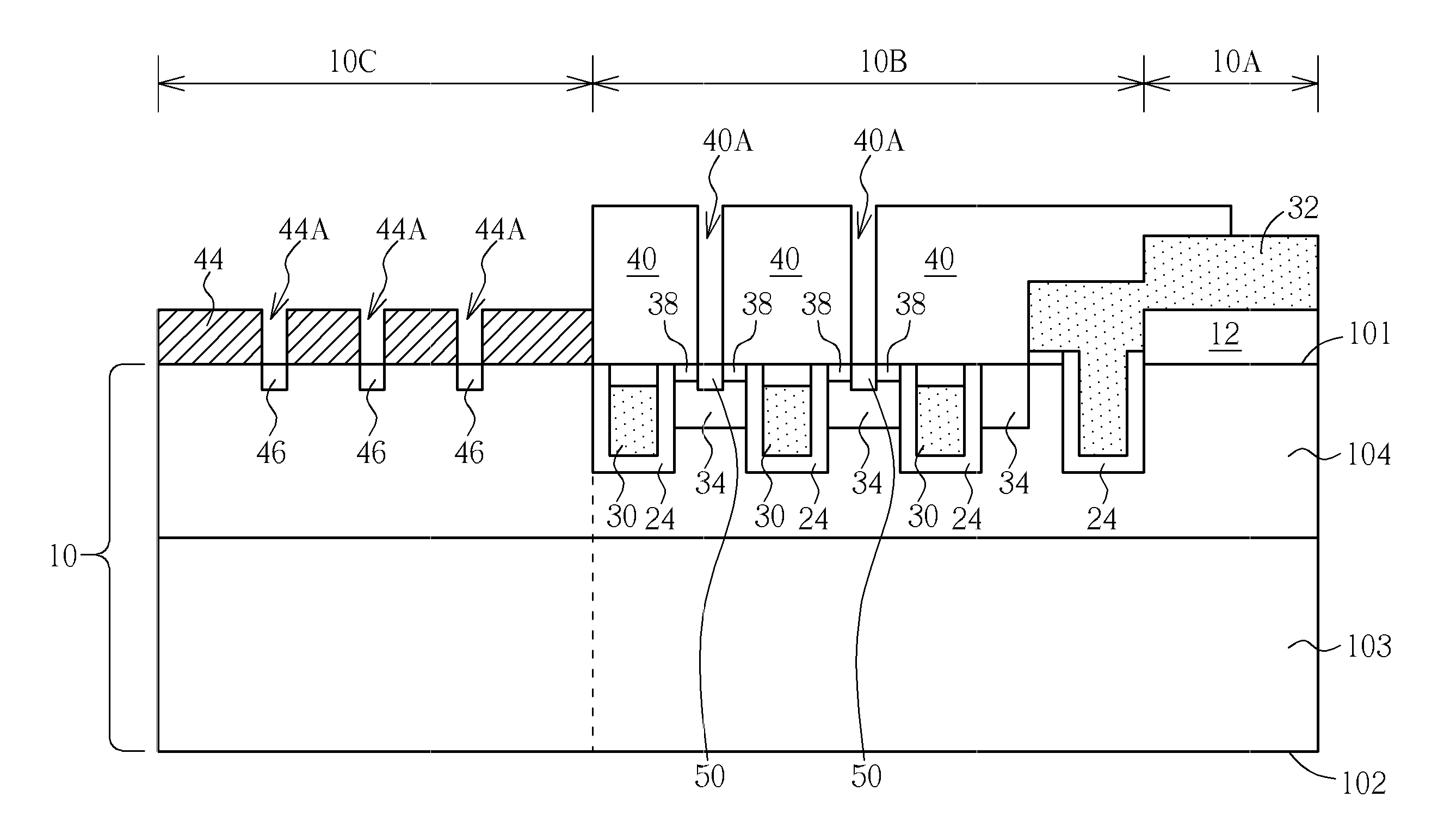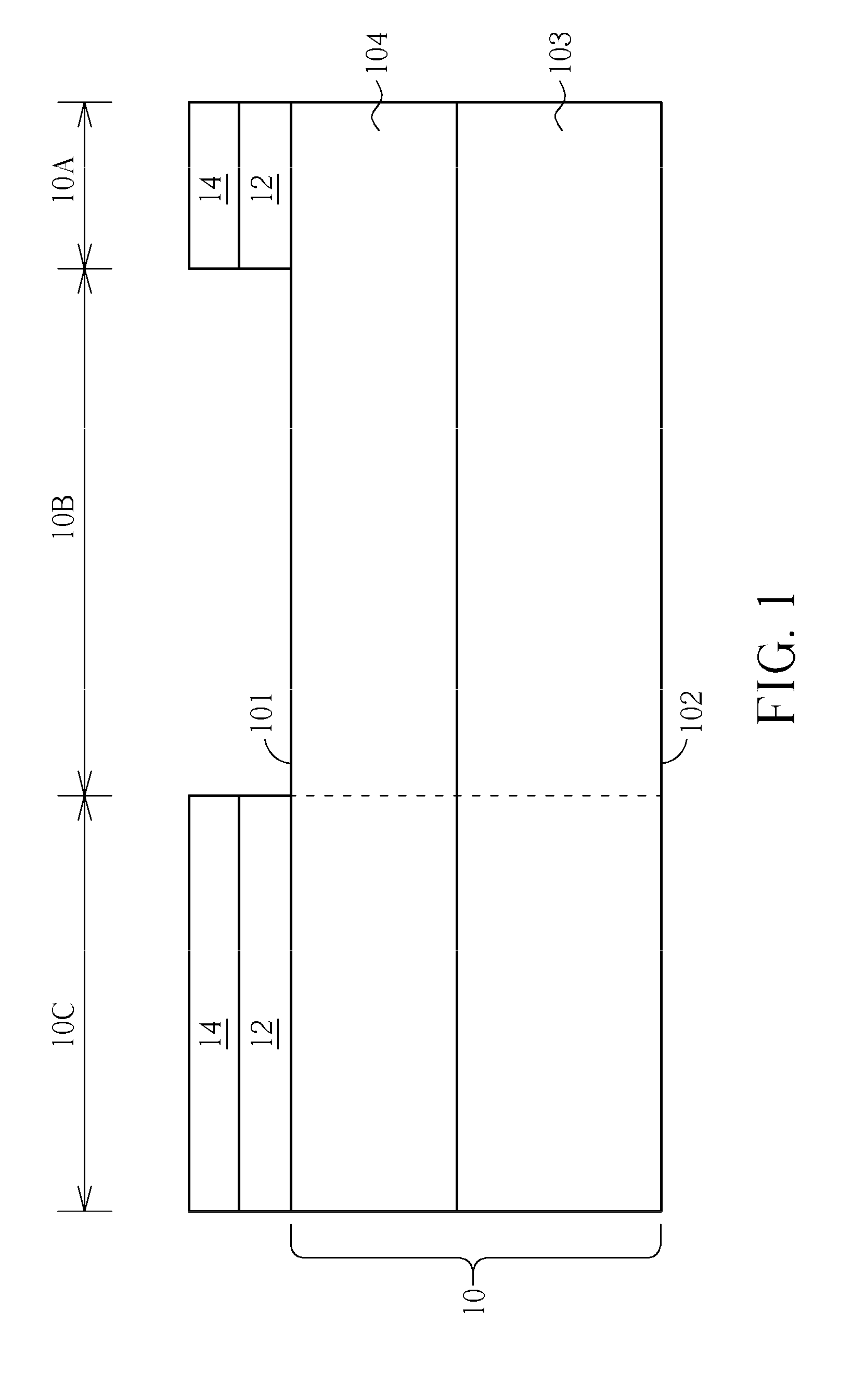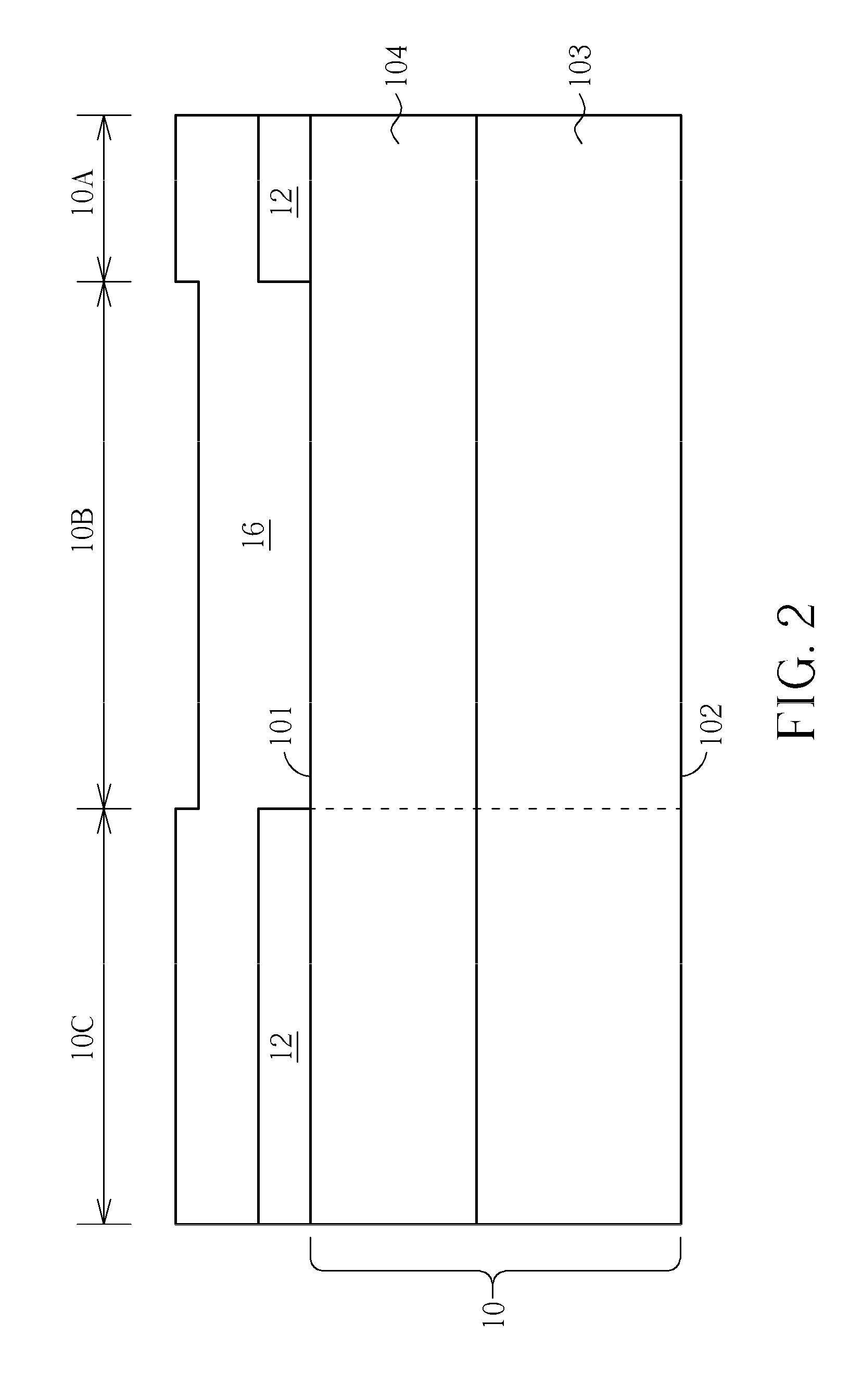Method for forming semiconductor device
- Summary
- Abstract
- Description
- Claims
- Application Information
AI Technical Summary
Benefits of technology
Problems solved by technology
Method used
Image
Examples
Embodiment Construction
[0023]Please refer to FIGS. 1-13, which are schematic diagrams illustrating a method of forming a semiconductor device according to a preferred embodiment of the present invention. As shown in FIG. 1, a semiconductor substrate 10 is provided. The semiconductor substrate 10 includes a top surface 101 and a bottom surface 102. A gate electrode conducting region 10A, a trench MOS transistor device region 10B, and an embedded SBD device region 10C are defined on the semiconductor substrate 10. In the present embodiment, the semiconductor substrate 10 includes a silicon substrate 103 and an epitaxial silicon layer 104 on the silicon substrate 103. The thickness of the epitaxial silicon layer 104 in the embedded SBD device region 10C may be modified depending on the requirement for voltage bearing ability to determine the voltage bearing ability of an embedded SBD device to be formed. Basically, the more the thickness of the epitaxial silicon layer 104 is, the better voltage bearing abili...
PUM
 Login to View More
Login to View More Abstract
Description
Claims
Application Information
 Login to View More
Login to View More - R&D
- Intellectual Property
- Life Sciences
- Materials
- Tech Scout
- Unparalleled Data Quality
- Higher Quality Content
- 60% Fewer Hallucinations
Browse by: Latest US Patents, China's latest patents, Technical Efficacy Thesaurus, Application Domain, Technology Topic, Popular Technical Reports.
© 2025 PatSnap. All rights reserved.Legal|Privacy policy|Modern Slavery Act Transparency Statement|Sitemap|About US| Contact US: help@patsnap.com



